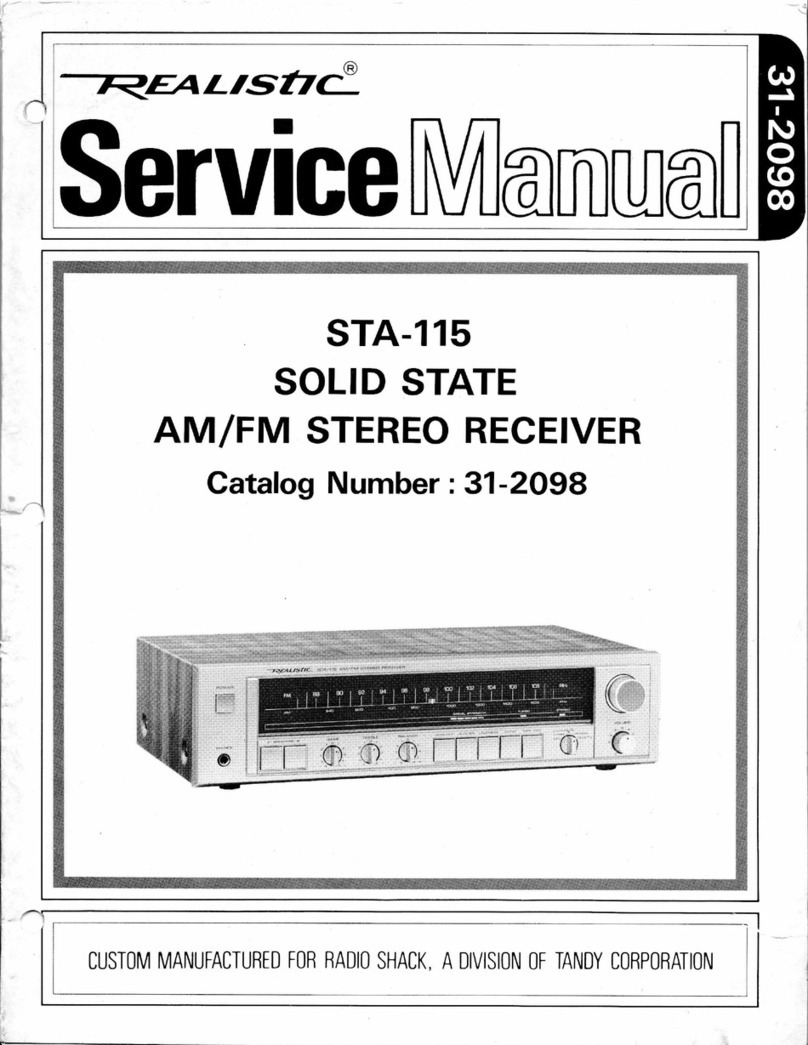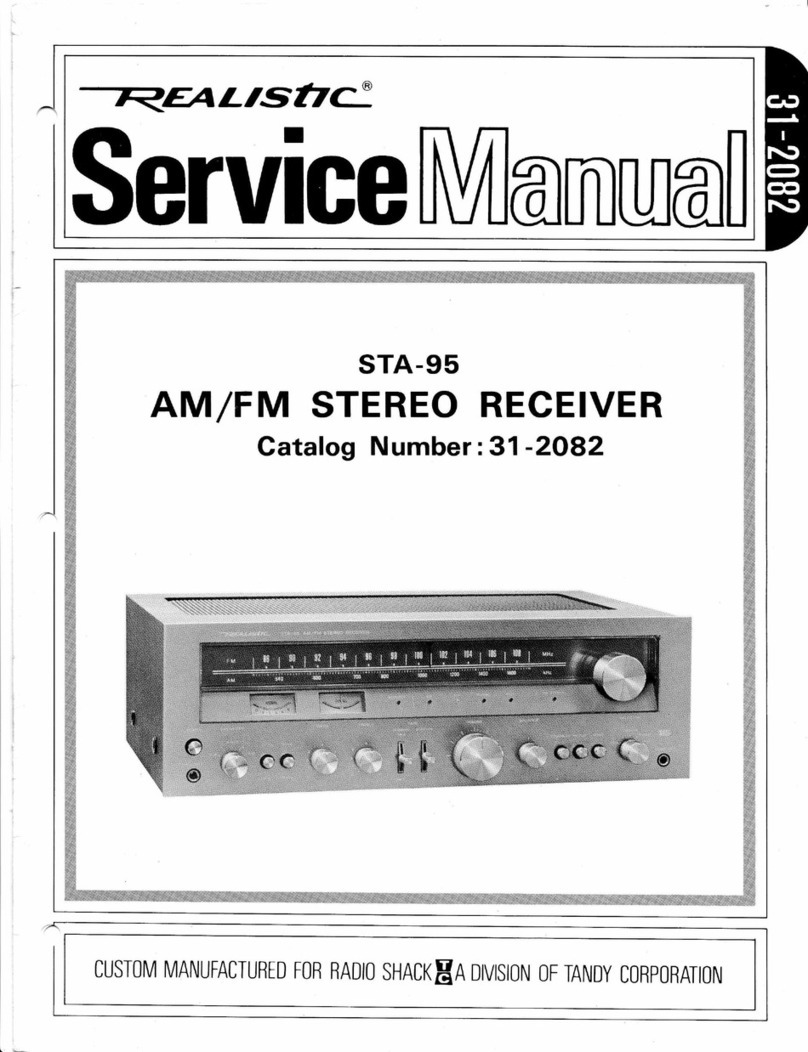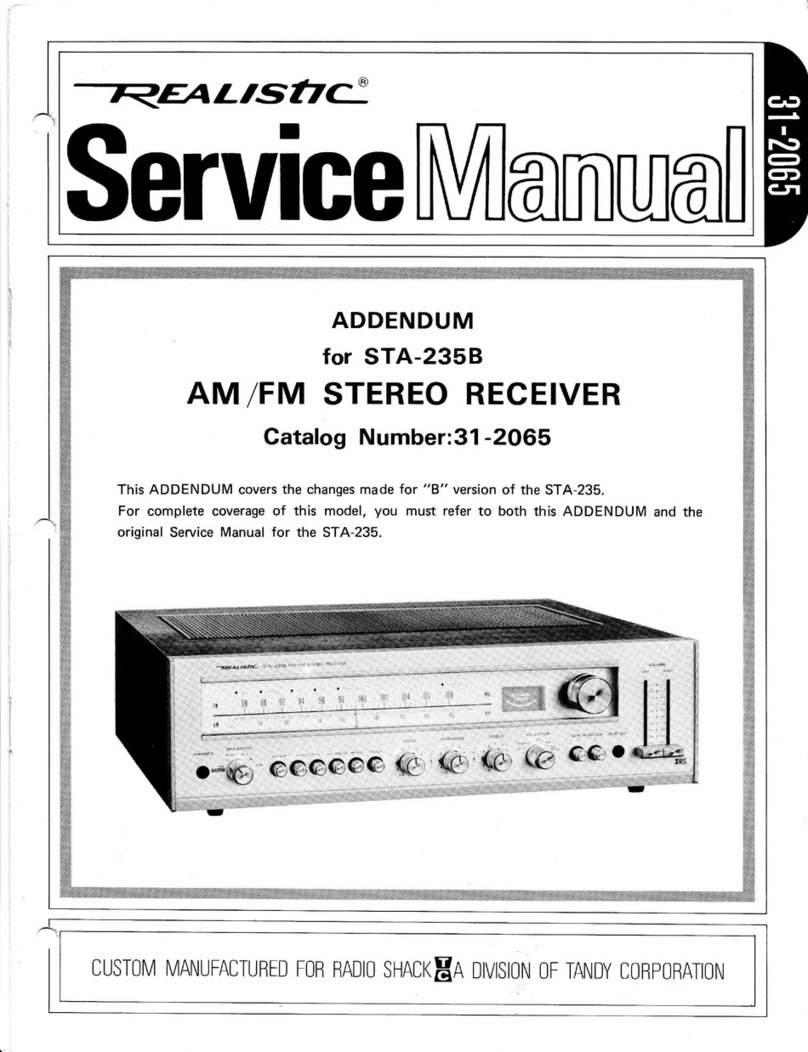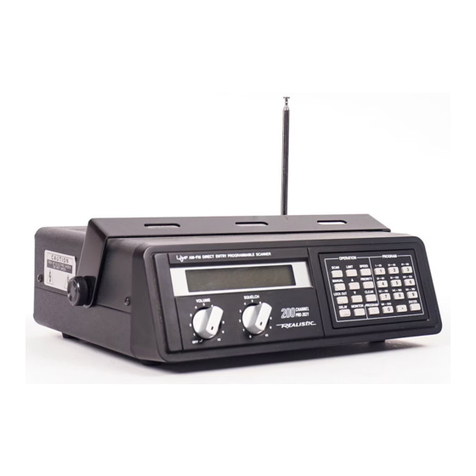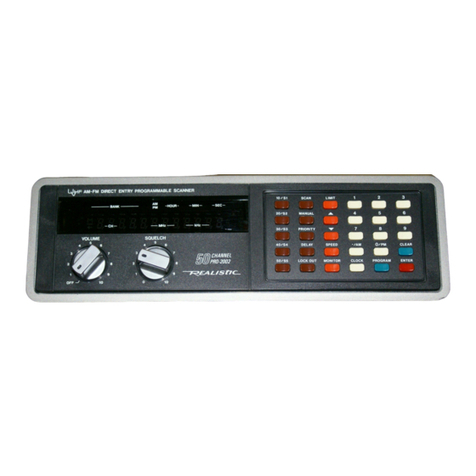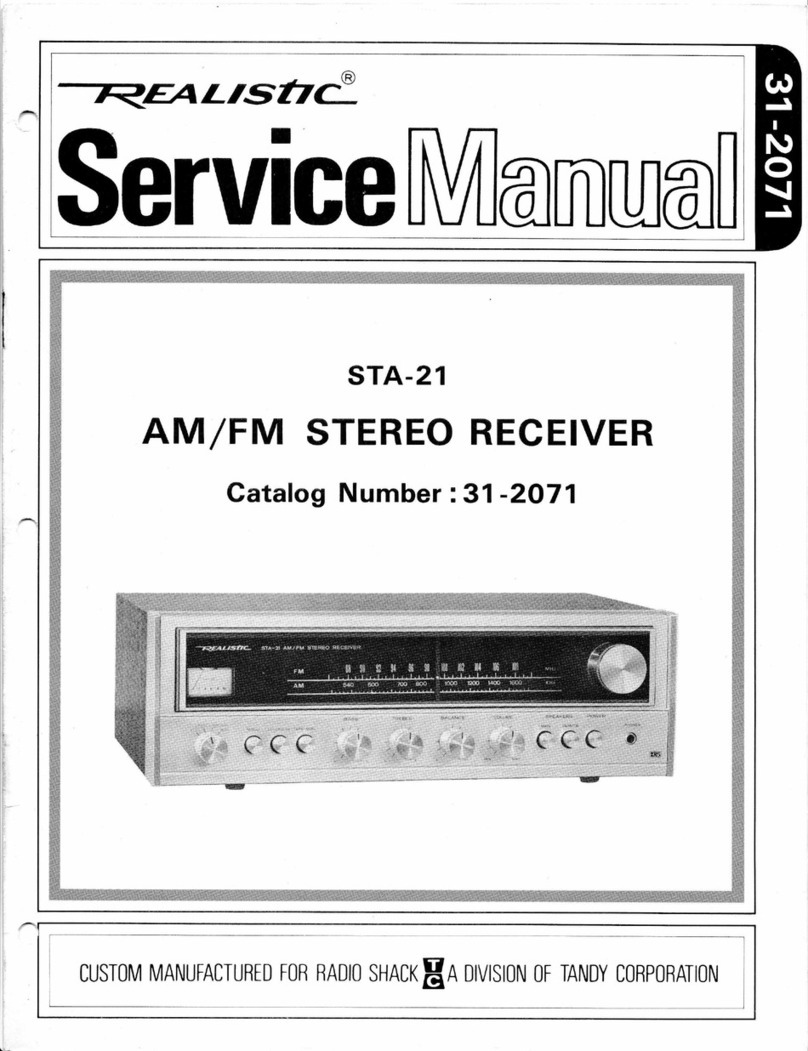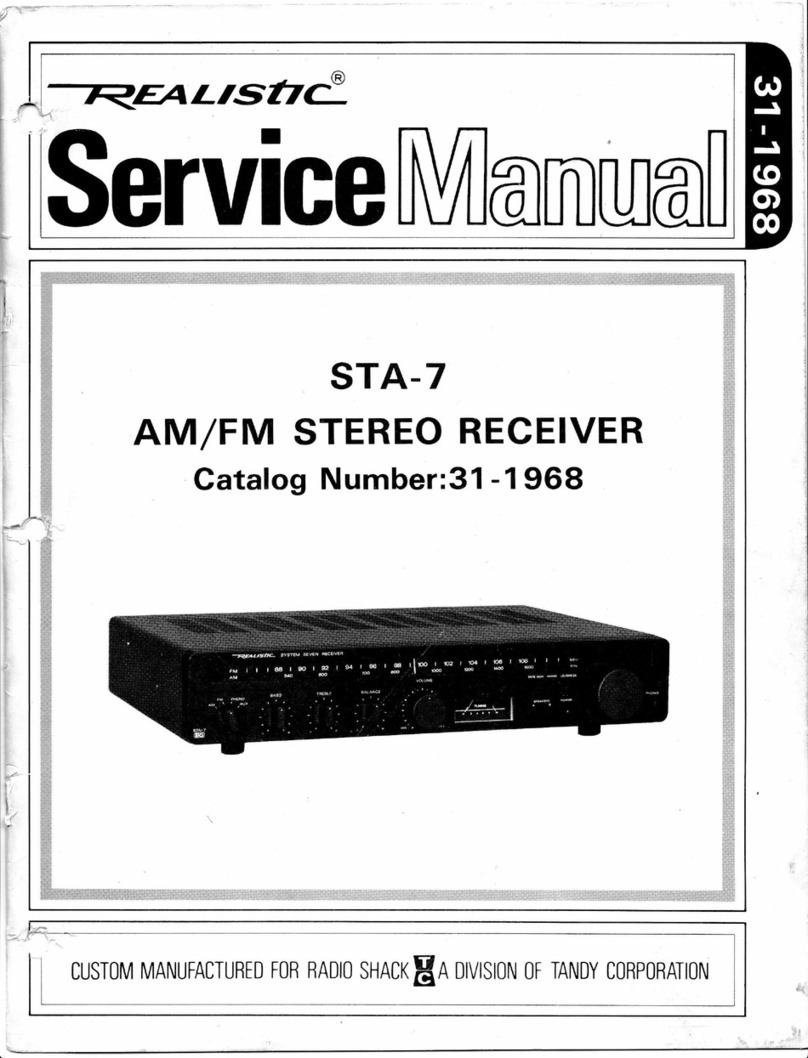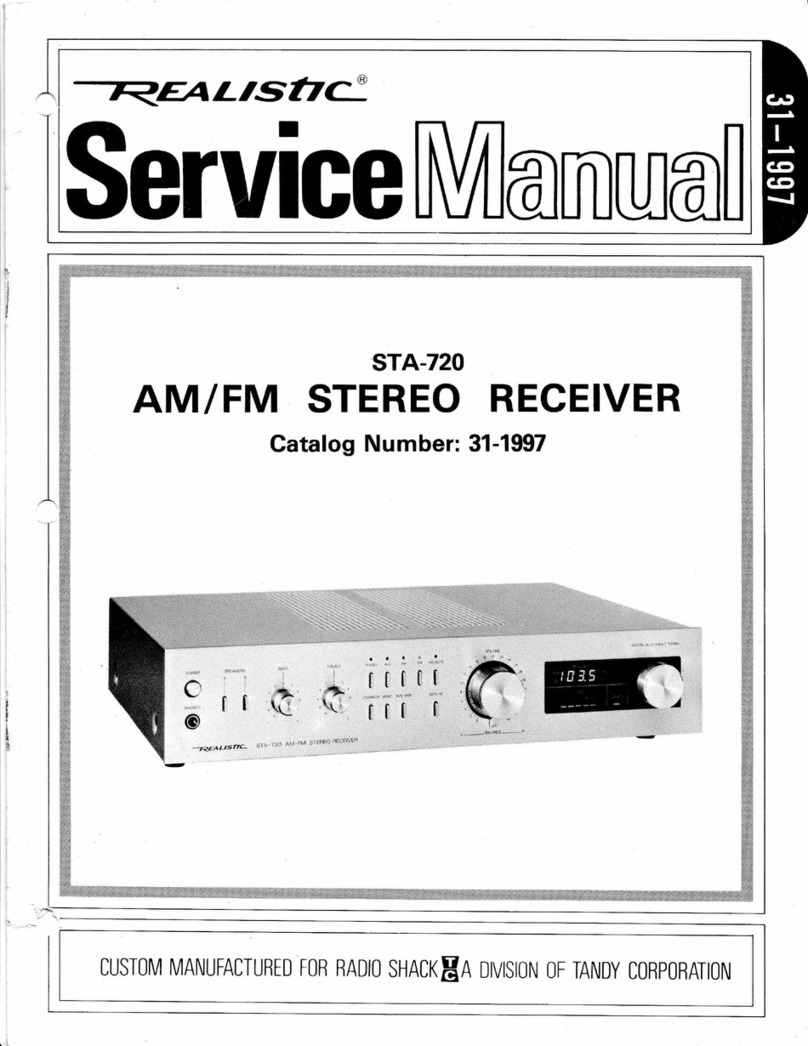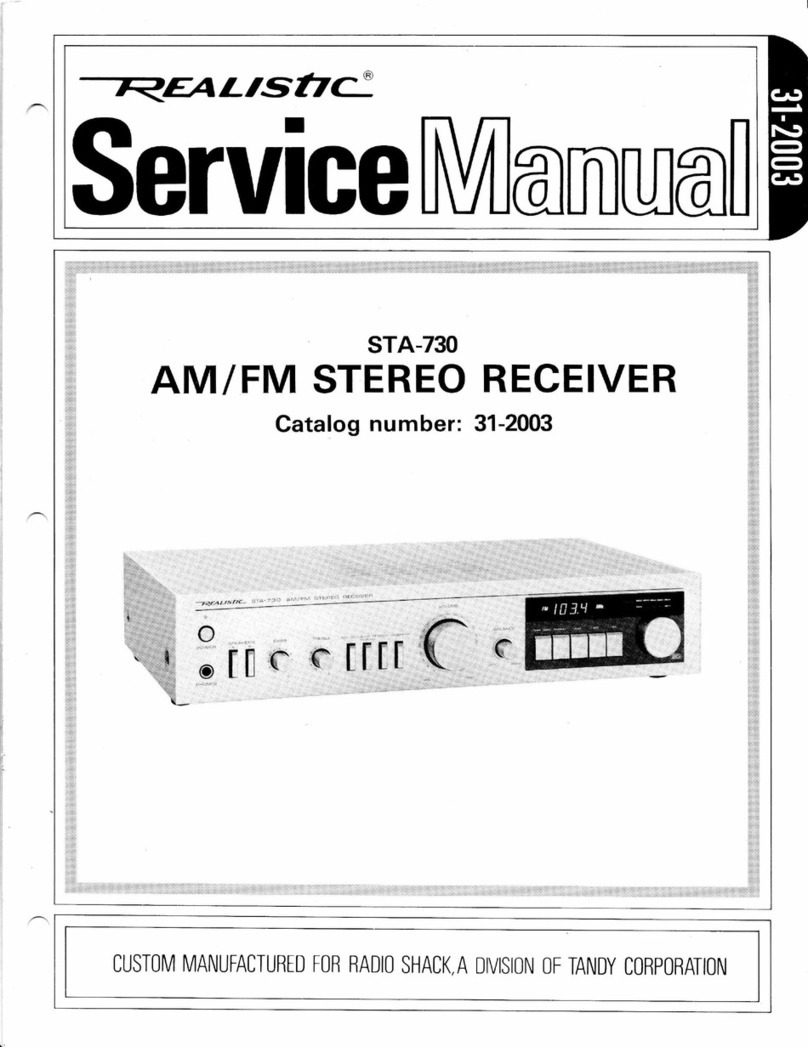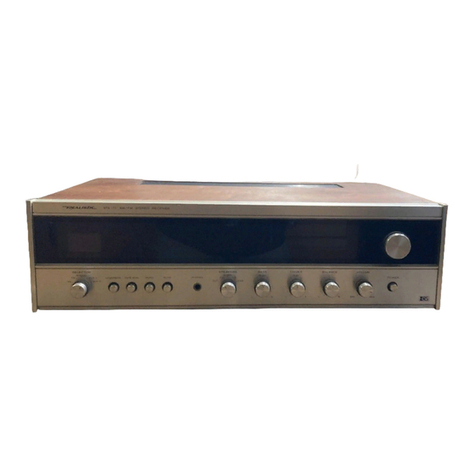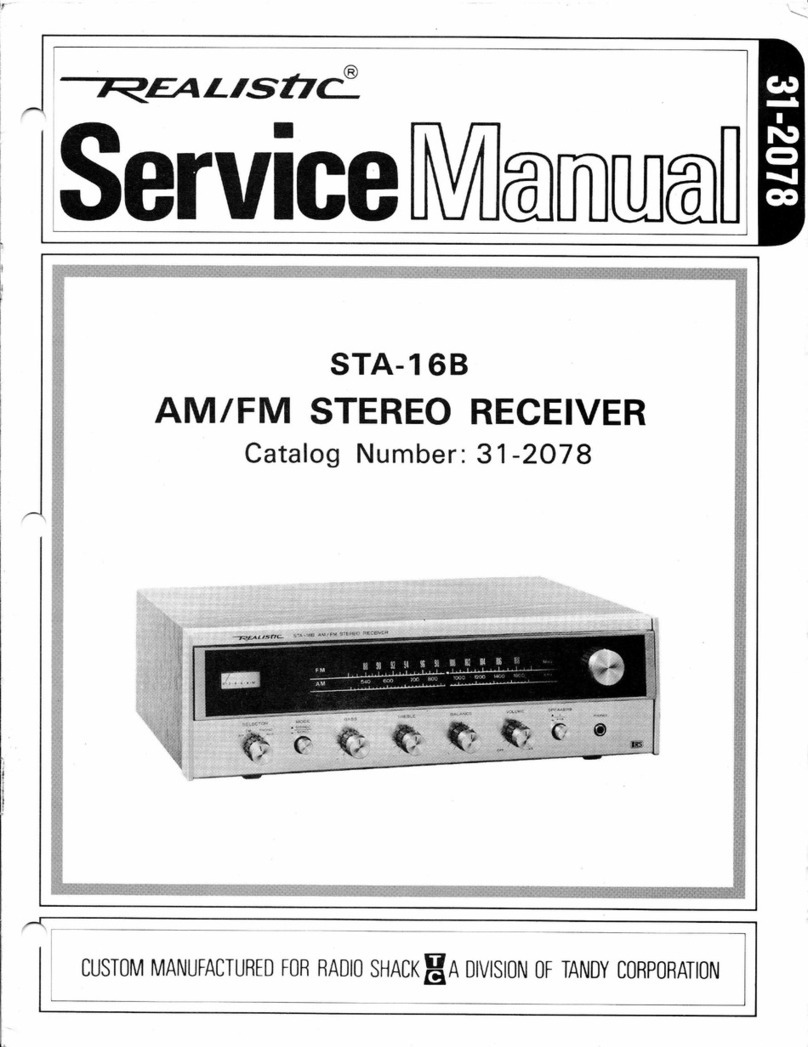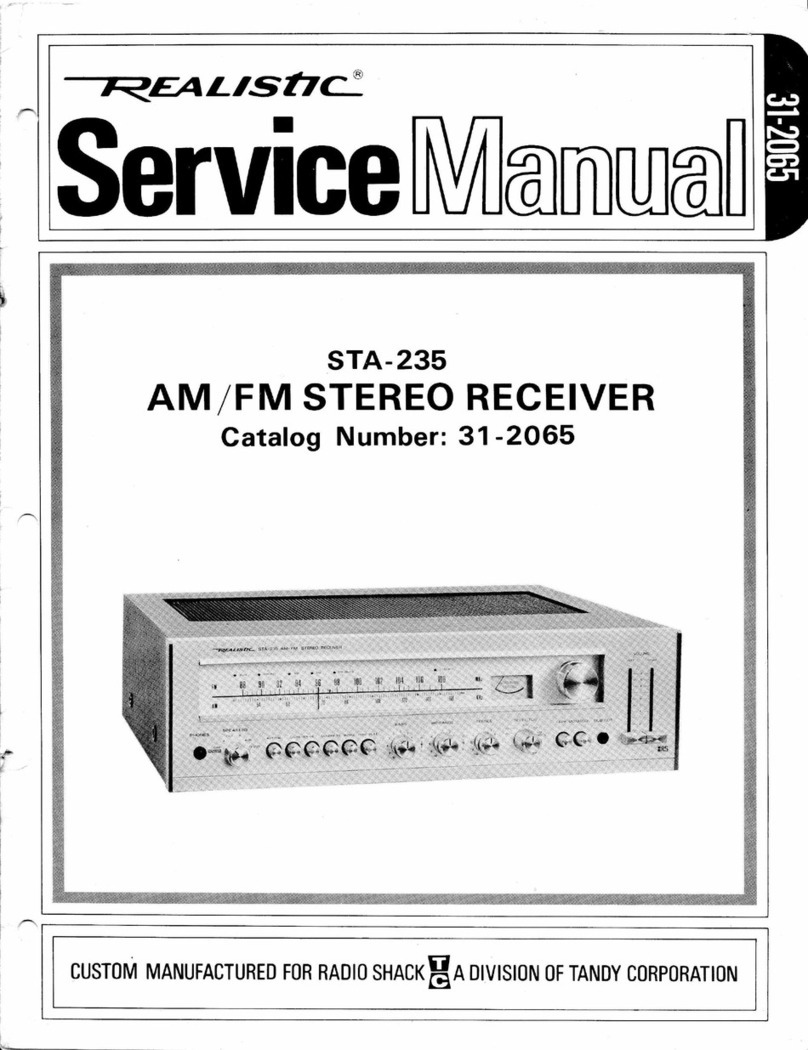
i
1. ELECTRICAL PERFORMANCE SPECIFICATIONS
AM BAND
Frequency Coverage
IF
Usable Sensitivity for S/N 20 dB at 600 kHz
at 1000 kHz
at 1400 kHz
S/N Ratio at 5 mV/m input 1000 kHz
Selectivity at 1000 kHz a. 10 kHz
input = S/N 6 dB Sens. input
AGC Distortion at 1000 kHz, 80% mod. 100 mV/m input
AGC Figure of Merit
lF Rejection Ratio at 600 kHz
lmage Rejection Ratio at 1400 kHz
Bandwidth at 6 dB down
Distortion at 5 mV/m input, 30% mod.
Tape out Level at 5 mV/m input (RCA)
Tape out Level at 5 mV/m input (DlN)
Fidelity Bandwidth at 5 mV/m input (1 kHz = 0 dB)
Whistle Modulation of 2nd and 3rd harmonic, at 1 mV/m,
5 mV/m and 100 mV/m input
Dial Calibration at 600 kHz
at 1400 kHz
Overload: With a radiated signal of 1Ylm, the signal shall
breakup.
FM BAND
Frequency Coverage
IF
IHF Sensitivity at 90 MHz
at 98 MHz
at 106 MHz
New IHF
S/N 50 dB Ouiting Sensitivity at 90, 98 and 106 MHz
S/N Ratio at 'l mV input
3 dB Limiting Sensitivity
lF Rejection Ratio at 90 MHz
lmage Rejection Ratio at 106 MHz
Spurious Response and Cross Modulation
Capture Ratio
Alternate Channel Selectivity 100 pV input
Distortion at 1 mV input
Dial Calibration at 90 MHz
AFC Holding Range at 1 mV input
Temperature Range for Satisfactory operation
AM Suppression
Maximum Signal Handling Capacity
Tape out Level at 1 mV input (RCA)
Tape out Level at 1 mV input (DlN)
UNIT
kHz
kHz
pV lm
pV lm
pY lm
dB
dB
o/
/o
dB
dB
dB
kHz
o/
/o
mV
mV
Hz
%38
kHz 0 r,25
kHz 0 4.50
tunable without undue distortion or
32 25
48
50 42
35 28
45 38
6 4.5-9
0.8 2
200 200 *.2.5 dB
15 15 r 2.5 dB
50-2200 B0-1800
NOMINAL
510-1650
455
200
200
200
45
LIMIT
520-1620
500
500
500
40
be
UNIT
MHz
MHz
pV
pV
pV
dBf
pV
dBf
dB
pV
dB
dB
dB
dB
dB
o/o
kHz
kHz
"C
dB
mV
mV
mV
NOMINAL
86.5-109
10.7
1.9
1.9
1.9
10.8
2.8
14.2
65
1.8
85
5B
80
1.5
60
0.1
a.250
LIMIT
88- 1 0B
3.8
3.8
3.8
16.8
4.5
18.2
55
3.5
70
48
65
4
48
0.5
1 250
t250 +. 100
0-45
42
100
750 .t. 2.5 dB
15 a.2.5 dB
50
200
750
15
-3-
